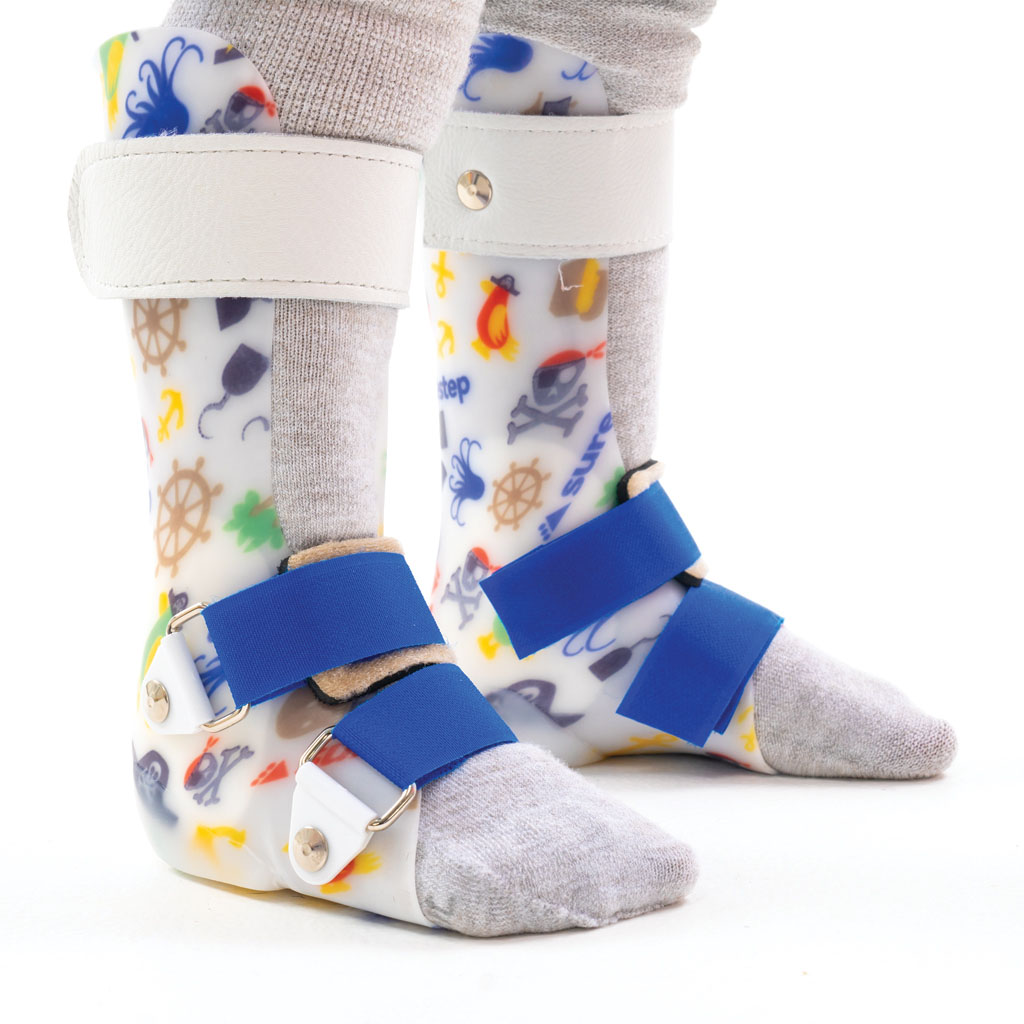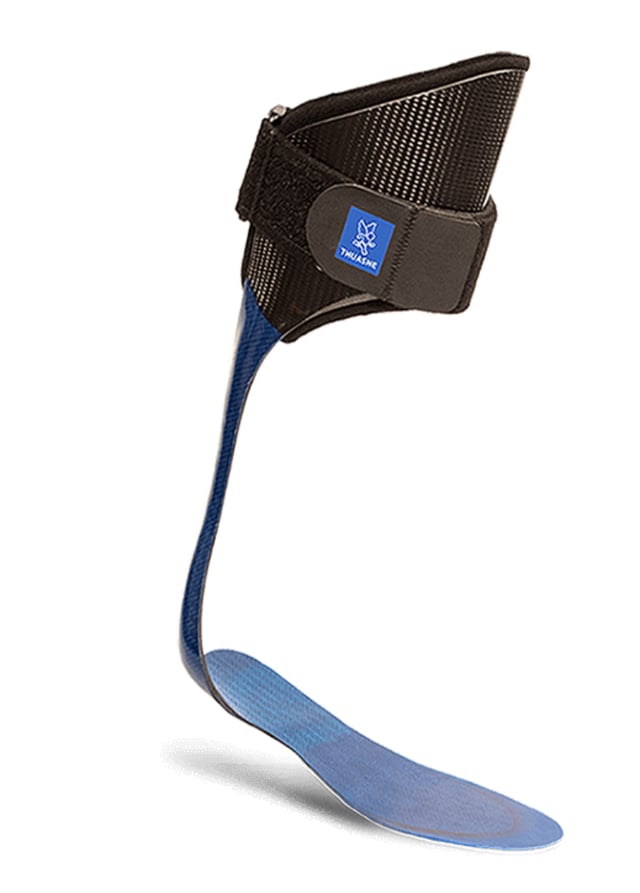The Main Principles Of Foot Braces
The Main Principles Of Foot Braces
Blog Article
Not known Facts About Foot Braces
Table of ContentsWhat Does Foot Braces Mean?The 8-Second Trick For Foot BracesThe Facts About Foot Braces RevealedFoot Braces Can Be Fun For AnyoneNot known Facts About Foot BracesThe 3-Minute Rule for Foot BracesFoot Braces Fundamentals Explained
The brace offers light support to enable the foot and ankle joint to heal. The brace is usually terminated once the injury is recovered. The SMO is used for flexible foot defects that call for good control of the heel. This support is most frequently used for pediatric patients when a foot is greatly pronated (the foot rolls inwards and the arch of the flattens).
The metal and natural leather AFO can also be desired as an extremely sturdy option for individuals tending to be very hard on their AFO support and require the toughness of light weight aluminum or steel. A hip kidnapping orthosis may be used for a number of hip joint conditions consisting of dislocation, fracture, or message surgical.
This orthosis is made use of in instances where a patient still has some control of the reduced arm or leg, however their condition has actually caused weakness in the muscles that preserve the knee in position. The knee joint of this support can have digital or mechanical control that immediately secure and open the knee joint while strolling to permit for even more natural walking activity.
Fascination About Foot Braces
Use this orthosis can assist avoid hip contractures due to continuous sitting. The functional knee orthosis is an extremely common sort of knee brace and is typically suggested in circumstances of knee tendon damages (ACL, PCL, and so on) or the demand to unload a knee compartment due to osteoarthritis. The WalkAide system is an electrical stimulation system utilized in circumstances when a person struggles with decline foot, but still has an undamaged nerve path from the affected arm or leg to the spinal column.
Foot drop or decline foot is a problem that can happen as a result of a stroke, nerve injury, neurological conditions or muscular tissue conditions. It is a problem that makes raising the front of the foot tough. This can then imply that your foot will certainly drag while strolling. Foot Braces. Foot drop can be short-lived or irreversible.
The brace additionally encourages the foot to strike the ground on the heel. This assists enhance your stride by decreasing just how much the foot drifts. Limiting just how much the ankle can relocate may create walking to no more feel as liquid and additionally extra strenuous. This is where flexible and hinged AFOs can aid.
Getting The Foot Braces To Work
Hinged AFOs on the various other hand provide restricted activity of the foot. This activity helps the foot build muscular tissue and likewise stretch. Why would you pick a rigid brace? These braces are beneficial for straightening the muscle and the joints. It is also valuable for people that require high quantities of ankle security.
Our licensed orthotists and specialists will certainly first take the prescription Full Report supplied by your physician. After that, we will carry out an initial analysis to analyze your leg. We will likewise assist you with any concerns you might have. After that we will certainly take an actors or 3D check of your leg to obtain the excellent fit for your orthosis.

Facts About Foot Braces Revealed
However, there is a mild distinction in between the 2 as they work in a different way for various individuals based upon their particular needs. Fairly simply, one can say insoles form a subset of orthotics. They are foam inserts positioned in your footwear to support the foot and support the arch. Orthotics are above and past that and include insoles, toe pads, dental braces, and arch supports that are utilized to deal with various foot conditions.
Once more, while insoles can last up to 6 months, orthotics can last for five years. All custom-made orthotics vary from generic soles in that they are developed to optimize your particular foot's function. While some deal primarily security, various other sorts of orthotics supply security and practical control. Thus, depending on the foot problem, there are different types of customized orthotics.
Subsequently, they are long-lasting, long lasting, and tend not to change shape. Practical orthotics give additional support to the foot and are particularly made to regulate the movement of foot joints below the ankle joint and improve foot and ankle flexibility. ArthritisHallux limitus/rigidus (inflamed, sore, and tight toe joints)Pes Plano valgus (falling down arches/flat feet)Cavus foot (high arcs)Limb-length discrepanciesBunion deformitiesPlantar fasciitisNeuromasNeuromuscular conditionsAnd moreSome orthotics address particular medical problems like intricate foot defects, inequality, or back troubles.
Fascination About Foot Braces
They lower the influence of standing and strolling, lower shear pressures on the sole, and rearrange and stabilize weight throughout the foot. They Get the facts are reliable in handling the following problems: Diabetic woundsArthritisDeformed feet.
Semi-rigid orthotics are usually advised for foot problems triggered by joint inflammation or diabetes. They are used to treat flatfoot and in-toeing or out-toeing problems in kids. Athletes also use them to avoid pain, specifically throughout training or competitors. These give biomechanical assistance. They additionally assist bring back the natural walking pattern by dealing with foot deformities and stabilizing the foot from a very early age.
Some Known Incorrect Statements About Foot Braces
These goal to meet specific sport-related needs. Sometimes, they optimize the biomechanical placement of the body and improve sporting activities performance, while in others, they aid avoid injury. They can also enhance energy transfer between the body and the foot. Professional athletes included in edge-control and multidirectional sporting activities, like skiing and skating, often make use of special custom-made orthotics.
Lower limb orthotics have reinvented mobility recovery. They offer tailored solutions for various conditions influencing the legs, ankles, and feet. Three unique types attract attention: ankle foot orthoses (AFO), knee ankle foot orthoses (KAFO), and hip knee ankle joint foot orthoses (HKAFO). Each gives a different level of support, from focused ankle joint stability to complete reduced body control.
Let's explore how these three brace types differ and discover which one will work best for you. When daily activities end up being difficult, it could be a sign you need orthotics to assist bring back feature and wheelchair. Orthoses are exterior tools that deal with your body to improve function and movement.
The Best Strategy To Use For Foot Braces
Lower-limb orthotic gadgets range from standard ankle joint assistance to full leg bracing, each made for particular wheelchair needs. AFOs, KAFOs, and HKAFOs represent the major kinds of lower-limb orthoses. Let's explore each type. An AFO is a brace that supports the ankle joint and foot. It expands from the foot area to just below the calf, making use of bands to hold it in location.
The products in these braces straight impact their function, sturdiness, and convenience throughout day-to-day wear. Thermoplastics develop the major foot plate and ankle joint section, with specialized ankle joints that flex throughout strolling.
The materials in these braces straight impact their feature, resilience, and convenience throughout everyday wear. Thermoplastics create the major foot plate and ankle area, with specialized ankle joint joints that bend during strolling.
Report this page